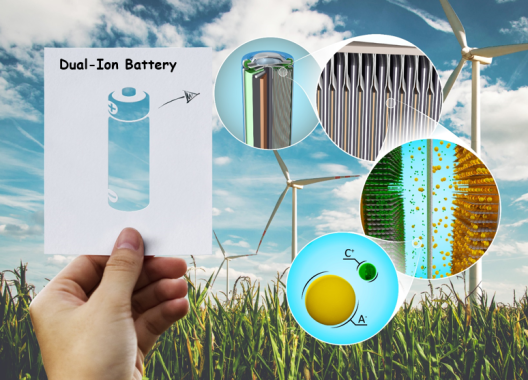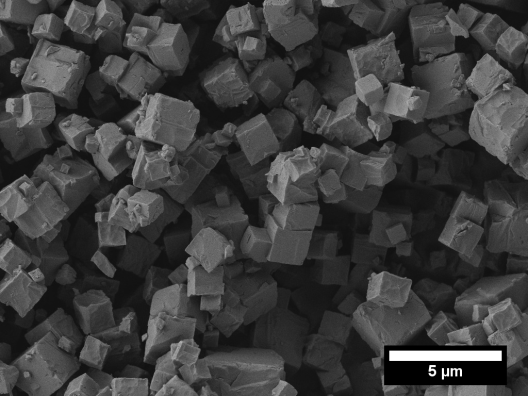Alternative Energy Materials
This area of competence at MEET Battery Research Center focuses on investigating alternative storage concepts relating to lithium-ion technology. Our team of researchers concentrate not only on potential future storage systems, but also on new types of material classes. One major area of research is that of dual-ion batteries and calcium-ion batteries, as well as new types of material classes such as metal-organic frameworks and highly conductive MXenes.
A World-Leader in Research on Dual-Ion Batteries

The MEET team currently has more than 30 publications and two patents on dual-ion batteries to its name, making it one of the world’s leading groups working in this field. The essential difference between dual-ion and lithium-ion batteries is in the charging and discharging mechanism of the technology. Instead of just one sort of ion – lithium-ions –there are also electrolyte anions in the dual-ion battery. This means that in the dual-ion cell the electrolyte functions as active material.
One of the advantages of dual-ion technology is that environmentally harmful, expensive metals such as nickel or cobalt are not needed. The energy density is currently the obstacle to any commercial breakthrough. It cannot compete with that of lithium-ion batteries. So, the aim that researchers have is to identify, develop and characterize new sustainable materials with a better energy performance for dual-ion technology.
New Types of Material Classes for Battery Innovations

The metal-organic frameworks which the researchers at MEET are working on have extremely large surfaces on what are often very small volumes – which can be an advantage for the conductivity. This material class, relatively new in battery research, is being investigated for example as electrode material in batteries.
The new type of material class of MXenes comprises highly conductive materials with a hydrophilic surface. They store their energy in the form of chemical bonds on their surfaces, which indicate that they should be able to produce a high energy density with fast charging speeds. Ideas such as these are being investigated and advanced at MEET Battery Research Center.

